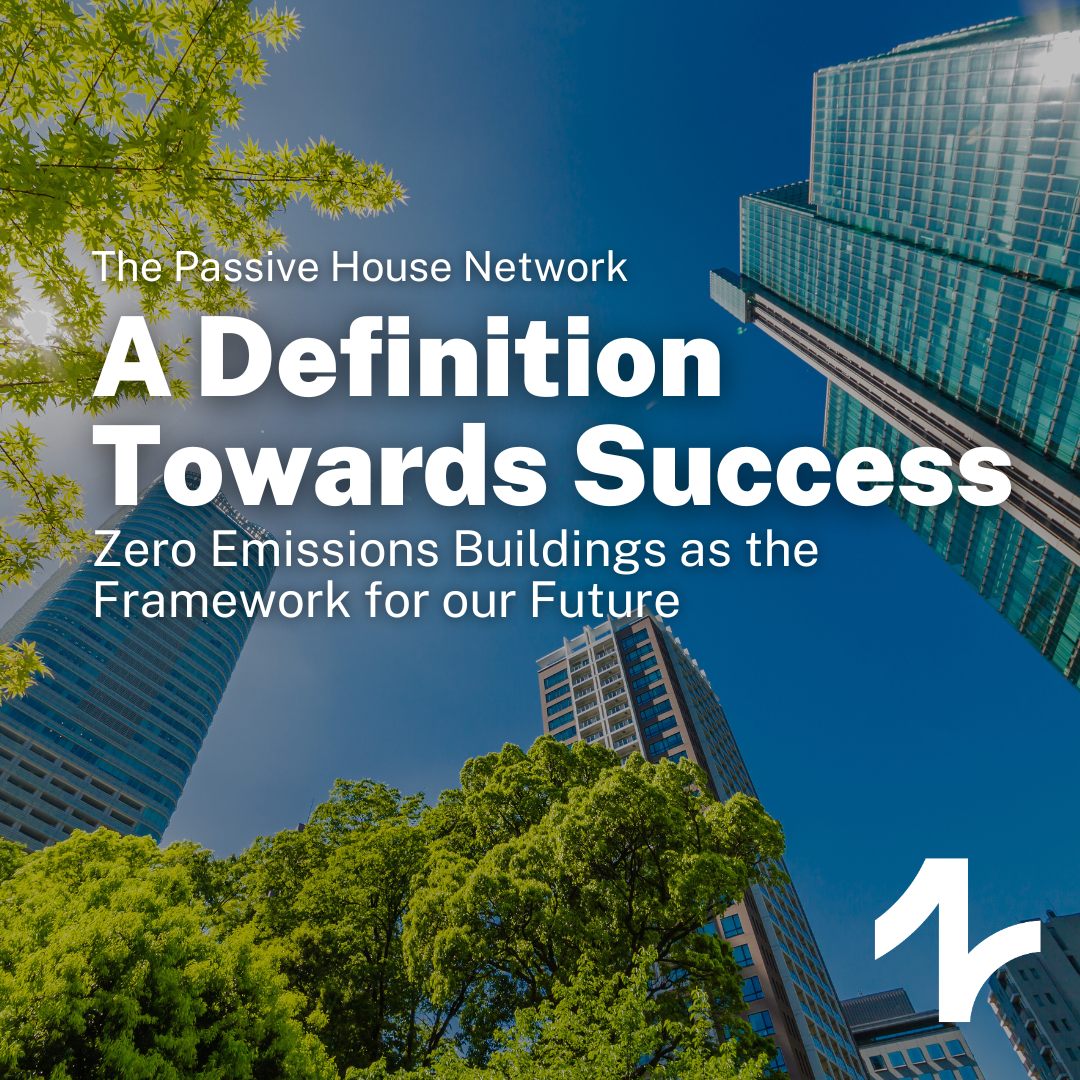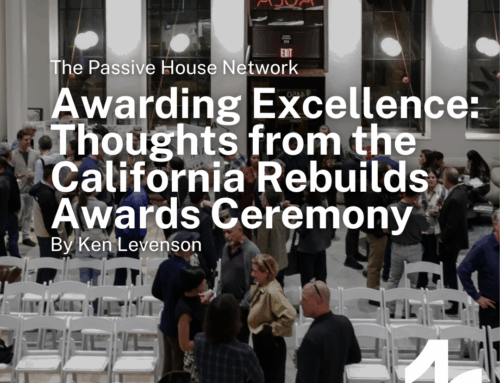A Definition Towards Success:
Zero Emissions Buildings as the Framework for our Future
What do Zero Emissions Buildings look like? The Department of Energy has just finalized an official definition.
The new guidance outlines three pillars of a Zero Emissions Building: energy efficient, free of onsite emissions from energy use, and powered solely from clean energy. The definition includes different compliance options for new and existing buildings, but in either case requires zero onsite emissions (with an exception for emergency backup in case the grid is down). Clean energy to power a Zero Emissions Building can include a combination of onsite and offsite energy. It’s a definition that comes as good news to The Passive House Network.
“The Passive House Network supports the national definition of a Zero Emissions Building and will endorse it as an explicit core goal for Passive House projects in the US,” said Bronwyn Barry, Policy Director at The Passive House Network. “We are committed to transforming the building sector to zero emissions buildings using Passive House tools, targets and training to demonstrate highly energy efficient, all-renewable outcomes.”
The definition’s requirement of “highly energy efficient” creates a logical foundation that provides natural room for implementing Passive House building standards, such as eliminating on-site emissions and requiring energy to come from clean, renewable sources. These elements are well supported and encouraged by the Passive House Institute’s Classic, Plus, and Premium Passive House standards, codified via their “Primary Energy Renewables” framework.
The Department of Energy has signaled that this definition is an evolving one that may encompass embodied carbon in the future, further pushing new and existing buildings towards more sustainable design practices.
Though not a regulation or official standard like an energy code, an official definition of a Zero Emissions Building provides a common framework that energy codes can work for. In defining this term, the Department of Energy has created a distinguished goal that builders, designers, manufacturers, and policymakers can work towards.
This comes at a time when the building sector comprises more than one-third of total U.S. greenhouse gas emissions, when the worst effects of climate change are impacting the indoor quality of life for Americans across the country, and when one in four American households struggle to pay their energy bills. This definition is a uniting force that can help address all of these problems.
—
As we take stock of our built environment and look to create more sustainable, comfortable, healthy buildings, there’s no better place to start than our schools. On Thursday, June 20th, from Noon-4PM ET, we’re holding a free online Symposium on why Passive House is the best building standard for our educational buildings. Hear from leading experts from the US and beyond as they explore the challenges, solutions, and case studies of Passive House School. You can learn more and register here. We hope you’ll join us.





